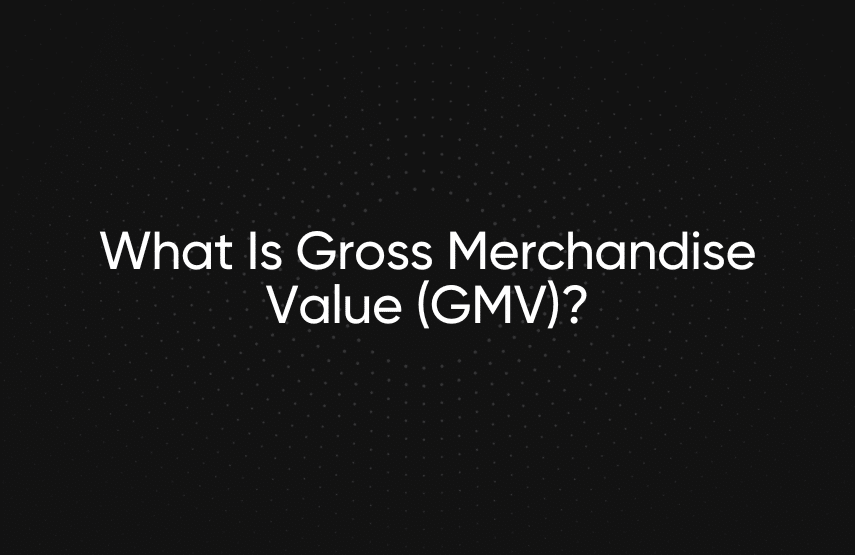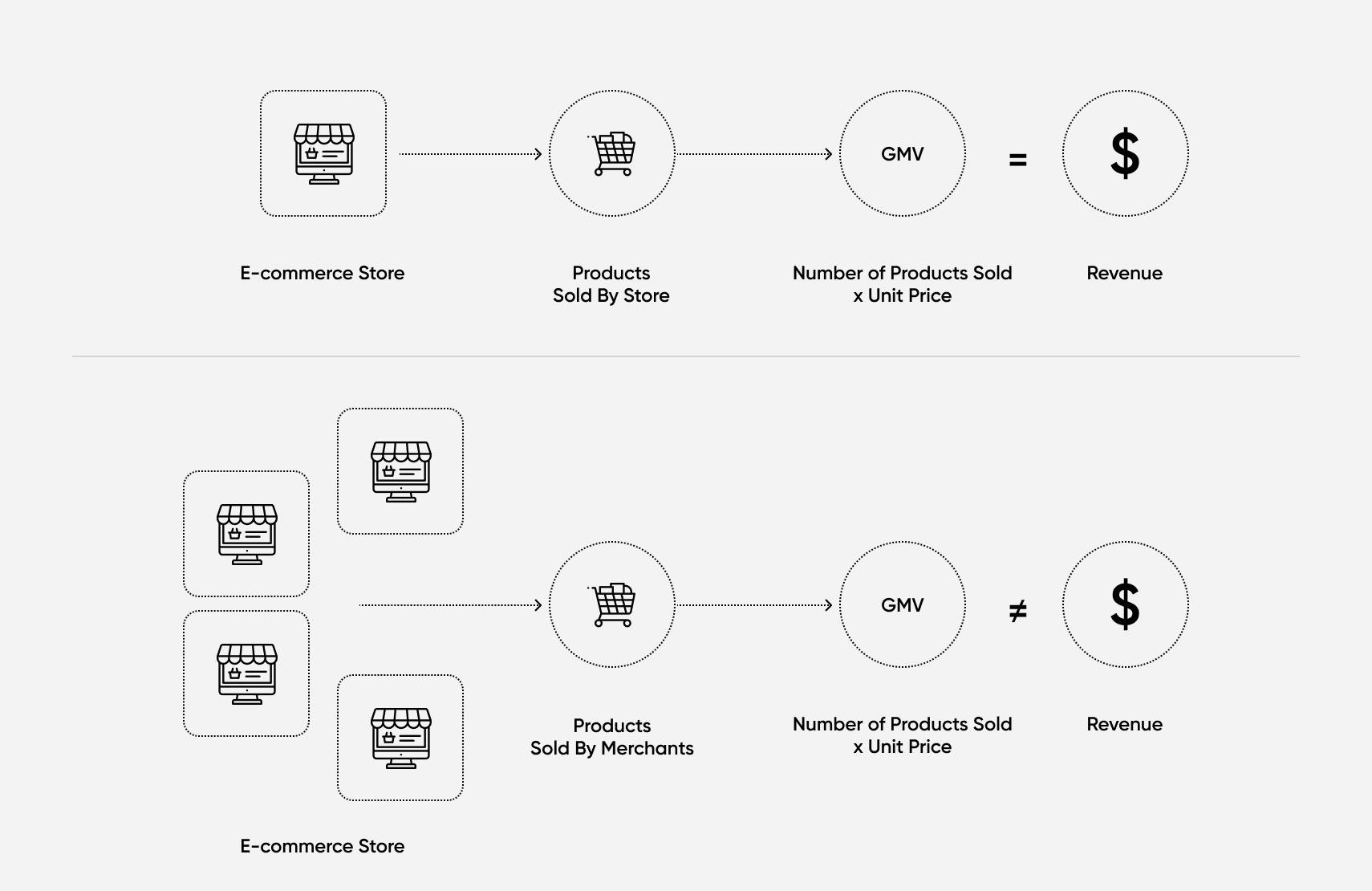What Is Gross Merchandise Value (GMV)?

For e-commerce marketplaces, GMV is a growth signal rather than an indicator of a company’s true value; for e-commerce stores, GMV is synonymous with revenue and closely tied to a company’s true value.
To calculate GMV, simply multiply the number of products sold by the product’s sale price; most e-commerce software can do this for you by product, by product category, or for the entire product catalog.
An alternative to GMV is Net Merchandise Value (NVM) which deducts costs related to advertising, refunds, and gateways payments from the GMV.
The online marketplace Etsy uses GMV to gauge seller success, buyer satisfaction, the health of its ecosystem, and the growth of its business.
You can use a modern e-commerce platform like fabric to decrease operational overhead and increase GMV.
[toc-embed headline=”GMV Definition”]
GMV Definition
Gross merchandise value (GMV), also referred to as gross merchandise volume, is a growth metric used by e-commerce stores and marketplaces for tracking the total dollar amount of products sold online.
[toc-embed headline=”Overview of GMV”]
Overview of GMV
Gross merchandise value was used by many e-commerce marketplaces as the primary key performance indicator (KPI) for growth in the 1990s, the decade when Amazon and eBay launched. GMV is still used as a growth metric by marketplaces such as Etsy (see below). However, it does not represent the actual value of the company that owns the marketplace since the company only pockets fees, like Etsy’s 5% transaction fee of the product sale price.
For e-commerce stores, or retailers who sell directly to consumers (D2C), gross merchandise value represents actual revenue as the total dollar amount of products sold online is collected by the retailer. Some of the largest e-commerce stores include Best Buy, Nike, and The Home Depot. At these companies, GMV is more closely tied to the company’s true value.
[toc-embed headline=”How GMV Works”]
How GMV Works
As you may expect from the definition, monitoring and calculating gross merchandise value are pretty straightforward. While a chief financial officer (CFO) may not focus on GMV, it’s a strong indicator of growth that digital marketers can easily calculate.
For instance, if digital marketers are putting resources into marketing a specific product, they can compare the previous month’s GMV for the product with this month’s GMV for the product. Of course, it would be wise to subtract advertising costs from this to measure the true return on investment (ROI).
Note: Instead, a CFO may be responsible for conducting a total cost of ownership (TCO) analysis.
How to calculate GMV
The most simple formula to calculate GMV for a digital marketer or anyone else inside the company is to take the sales price of a product (i.e. piece of merchandise) and multiply it by the number of products sold. You could do this for a single product, multiple products, or the entire product catalog.
The equation for a single product is GMV = Product Sales Price x Number of Products Sold. So if you sold 100 products at $200/product the GMV would be $20,000. Fortunately, many commerce and payment platforms let you extract GMV for the entire product catalog or specific product categories so you don’t have to add up GMV for individual products.
After you calculate GMV and see it increasing it means one of two things: 1) you’re selling more products, or 2) you’re selling more expensive products. It’s best practice to analyze your sales to understand which one is contributing to the increase.
An alternative to GMV
Gross merchandise value is a useful growth metric to track but it leaves much to be desired when the company, its investors, and its prospective investors are trying to determine the true value of the e-commerce business as there are fees and expenses to consider. This is why many companies involved with e-commerce track Net Merchandise Value (NMV).
NMV is what you get after you deduct all the fees and expenses from your GMV over a period of time. The equation is NMV = GMV – All Costs. Costs will vary by company but common costs include advertising, refunds, and gateway payments. It’s also a best practice to exclude shipping fees and subtract for refunds.
[toc-embed headline=”Examples of GMV”]
Examples of GMV
Etsy
Etsy is an example of an e-commerce marketplace that tracks gross merchandise value. Referred to by Esty as gross merchandise sales (GMS), Etsy believes that “GMS is an indicator of the success of Etsy sellers, the satisfaction of Etsy buyers, the health of our ecosystem and the scale and growth of our business.”
Because of the reaction to coronavirus that inspired more people to purchase products online, Etsy more than doubled its GMV from $1.18 billion in Q1 2020 to $2.46 billion in Q2 2020.
eBay
Another example of an e-commerce marketplace that tracks gross merchandise value is eBay. Although this isn’t a true representation of the actual company’s revenue, it is a quick and easy calculation. Furthermore, it provides insight into how eBay is performing in comparison to its competitors, like Amazon. WIth eBay’s 2020 GMV totaling just $100 billion and Amazon’s totaling $475 billion, eBay is determined to close the gap.

Tech advocate and lead editor @ fabric. Previously StackPath, Upkeep, StackShare, MaxCDN.

